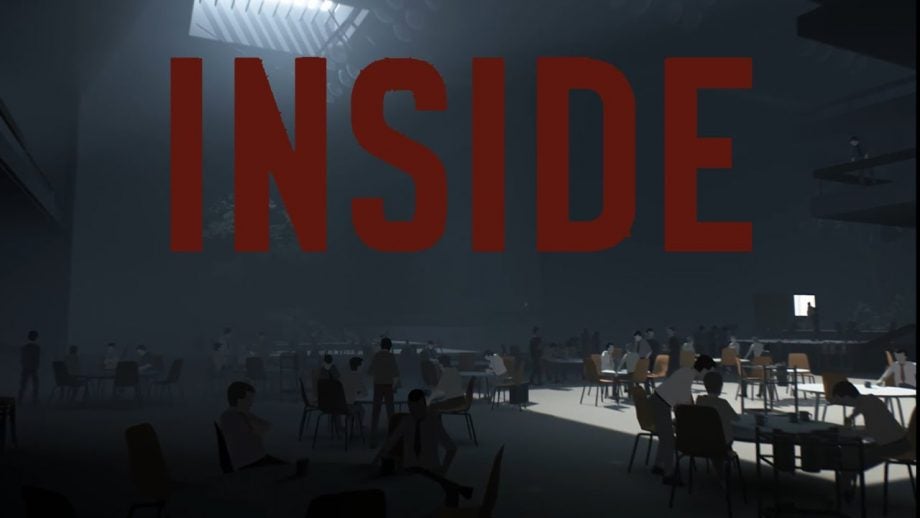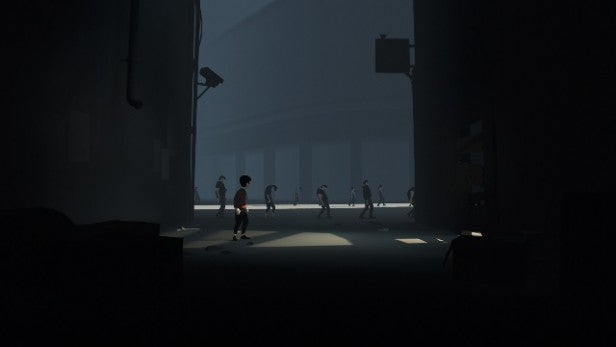Why Playdead’s Inside is massively overhyped

OPINION Games Editor Brett Phipps explains why he feels the love for indie game Inside is a little over the top
Note: This article contains spoilers
Anyone with even a passing interest in games will have noticed the positive reviews for the indie game Inside in recent days. Indeed, our very own Stuart Andrews loved the game so much he gave it a 10/10 and called it a “must play game for everyone”.
Playdead’s follow-up to Limbo stays true to the formula laid down by its predecessor and delivers something that, according to Metacritic, is a generation-defining experience.
But, having just finished the game myself, I’m struggling to understand why. Is it a good game? Sure. Is it great? Not for me.
Related: Inside review
A couple of things first. This piece will be pretty spoiler heavy, so I recommend you either finish Inside or care not one bit about the game before reading. Secondly, this is not a criticism of anyone else’s opinion of Inside. Lord knows there are enough people shouting at each other in this world; this is simply me expressing my disappointment after being presented with such hype.

Inside kicks off as Limbo 2, with a boy running through a forest from something – you never find out exactly what, but I presume that’s part of its charm and mystique – and you’re required to learn as you go, with no hints whatsoever.
The great thing Playdead does is convey what the player needs to do without specifically telling them – an art lost in modern gaming due to an obsessive need to tutorialise everything. For example, you’ll learn every mechanic and button required in Inside’s beautifully simplistic control system within around 10 minutes. A high ledge, a suspiciously placed box near an even taller obstacle, objects to cower behind while guards search by torchlight… All wonderfully intuitive.
But then, you’ll come across the game’s first unavoidable death, and this is where Inside loses something.
Related: Xbox One S vs Xbox One
There’ll be plenty of times throughout your journey where you have to die in order to learn how to not die and to progress. This trial-and-error approach is the bread and butter of Inside. You could avoid some of the deaths at your first attempt, but that’s not how it’s designed, and that’s poor.

Plenty of mud gets slung at the likes of Dark Souls for its supposed trial-and-error frustrations – which in most cases is more just ‘git gud innit?’ – so the same brush must tar Inside, even if the issue isn’t as ever-present as it was in Limbo.
Because of the use of this tactic for key chase scenes, most lose suspense. I should be on the edge of my seat, frantically trying to reach the fence to flee from the frothing guard dogs. Instead, I’m waiting for them to catch me, semi-defeated before the chase has even begun. Rather than looking toward the light at the end of the tunnel, I’m looking in every nook and cranny for a hidden spot that I’ll need to head for on the second or third run.
Related: Everything we know about the Xbox Scorpio
The next issue comes in the form of puzzles: while making great use of the beautiful environments, they don’t require much thinking. None of the puzzles will leave you scratching your head, meaning Inside becomes more of a walking simulator with some stops for air instead of an adventure game. Yes, the puzzles are environmental, but this isn’t exactly ground breaking stuff.
My last issue regards the game’s narrative – specifically, its lack of depth and exploration of the themes and characters presented.

Inside dares to introduce thought-provoking topics throughout, and with them titillating questions. A group of zombified blue collar workers can be controlled with the use of a weird cranial contraption. A deadly sea creature, after spending most of the second act trying to kill you, drags you to the bottom of the sea, implanting a contraption in your chest in the third act to control the workers all the time. (I still have absolutely no idea why the boy can suddenly breathe underwater, by the way.) With each new interaction, I became more invested in their story.
Except none of these questions are answered by the time the credits roll, with the story held together by flimsy symbolism as a means of narrative progression.
It’s quite clear you’re in some sort of immoral testing facility, with each chapter representing a different experiment, each new level a more grotesque and unnerving manipulation of mankind. However, that’s it, that’s all we get. We never find out who the underwater girl from The Ring is. Never do we discover the shady corporation running this operation, or what the hell that sound blaster section was in the middle of the game. None of it.
The worst part? The game culminates with the little boy being absorbed by a giant, fleshy Katamari, which proceeds to run wild through the facility, collapsing in a heap outside on the shoreline and bringing the game to its abrupt end. I know this is supposed to be a big moment, but I chuckled at the thought of this turning into a Katamari sim.
Related: Best Xbox One games
Many may find deeper meanings in every inch of Inside. Some may see this as a great story left to the player to pick apart and deduce for themselves, but that’s a flimsy excuse – the equivalent of buying a book that comes with a pen and half the pages blank.
Gaming, as a medium, isn’t very good at telling stories. Yes, there are some good ones – BioShock and The Last of Us are often cited – but compared to films and books, games are often constrained by the need to be played. As such the narrative can get lost between prolonged sessions of agency, throwing off the pacing. Even the ones you’re thinking of right now as landmark stories (and that means you, Final Fantasy VII fans) have probably just one or two great moments in a mediocre plot.
Inside just doesn’t seem to explore any of the themes it sets out: morality in human experimentation, tyrannical regimes, fear and loneliness. The credits began and I was genuinely shocked I’d reached the end. It felt overly smug, despite having achieved little in the three hours it took to finish.

Inside suffers, I think, from a desire from the outside for it to be good. I’d genuinely be curious to know what would happen if a big, triple-A developer presented a title like this – how it’d be received. Unravel immediately jumps to mind, published by EA. With a Metacritic of 78 it was still warmly received, but not considered genre-defining, let alone one of the best of its generation.
This is not to throw shade on those who’ve loved the game, most certainly. I can absolutely see why they love it, but I can also see flaws with Inside for which other games get pelted. At times I feel the “indie darling” phenomenon does ring true.
Is Inside a bad game? Absolutely not; it’s a worthy follow-up to Limbo that takes everything that game did and varies it a bit, even if it doesn’t necessarily do it better. But it doesn’t do anything new or refreshing enough to be considered in any way exceptional.


